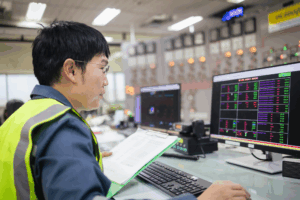
Workplace safety tips for back injury prevention
Back injuries can be painful and long-lasting. They account for a significant portion of work-related musculoskeletal injuries. According to the Federal Bureau of Labor Statistics (BLS), over 250,000 back injuries caused missed work in 2022.
The Occupational Safety and Health Administration (OSHA) does not have a specific regulation for back safety, but training employees to lift safely is implied by the General Duty Clause of the Occupational Safety and Health Act of 1970. The law requires employers to provide employees with a workplace that is “free of recognized hazards.”
Identify risks and implement preventive measures
Employers should recognize potential hazards that could cause back injuries in the workplace, such as heavy lift work, and take the proper steps to prevent these injuries from occurring. A job risk assessment is a great tool for evaluating each hazard that you may not have realized was there.
Employers can significantly reduce the number of workers injured by maintaining a culture of safety within the workplace. Demonstrating that safety is a priority shows that your employees’ health and well-being are important to your company. The following steps can be taken to reduce workplace accidents.
Provide training on proper lifting techniques
When employees know how to properly lift heavy or awkward objects, it reduces their risk of injury. This starts with lifting objects by bending the knees and using the legs, not the back. Maintaining a stable stance, keeping the load close to the body, and avoiding poor posture are essential parts of safe lifting procedures.
Encourage the use of assistance
Sometimes more than one person is needed to lift an object. These are called team lifts. Team lifts require the use of proper lifting techniques together.
With proper training, machinery can be used as well. Forklifts, or powered industrial trucks, provide mechanical assistance for lifting heavy objects.
Rotate jobs to reduce the likelihood of strain
Repeatedly performing the same task can cause strain and fatigue. When job rotation is applied to the workplace, it encourages employees to perform a variety of tasks, reducing the chances of suffering repetitive strain injuries. This approach alleviates physical stress on specific muscle groups while keeping work engaging.
Create an ergonomic workplace
OSHA has stated that it will not focus its enforcement efforts on employers implementing effective ergonomic programs or making good-faith efforts to reduce hazards that cause worker strains and sprains. Ergonomics is the science of designing the job, equipment, and workspace to fit the worker. Back safety is a cornerstone of an effective ergonomics program.
Encourage a healthy lifestyle
Although improper lifting, carrying, and moving techniques are the primary cause of back injuries, significant contributing factors are workers who are in poor physical condition and overweight. Encourage your employees to maintain a healthy weight and good muscle tone through stretching exercises and other wellness programs. Physical fitness also improves core strength, causing less strain on the back muscles and the spine.
Identify the types of injuries suffered by employees
Safe lifting procedures and load-carrying techniques are crucial to preventing back injuries in the workplace. Back injuries often occur when carrying or lifting heavy objects. Unfortunately, most workers do not consistently use back safety practices, putting their personal well-being at risk.
With proper training and proactive measures, many workplace back injuries can be effectively prevented. The most common types of job-related back injuries include:
- Strain—overused or overstretched muscles
- Sprain—torn ligaments from sudden movement
- Herniated disk—loss of the spine’s cushioning ability from strain or age
A back safety program is key to dramatically reducing debilitating back injuries on the job and an important aspect of overall injury prevention in the workplace. Improving worker safety is an essential part of maintaining a productive and safe work environment.



